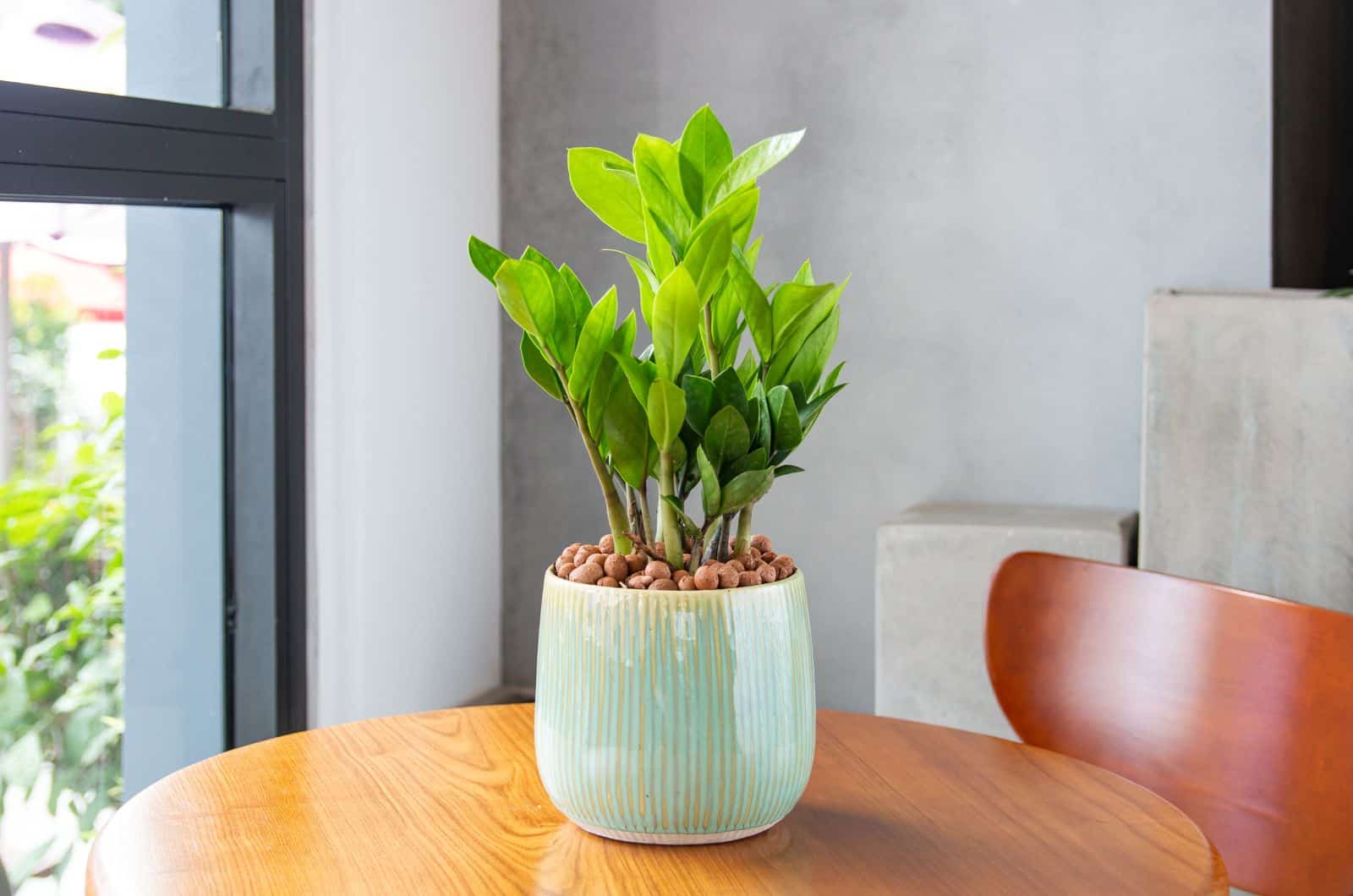Understanding the Lighting Needs of Your ZZ Plant
The ZZ plant, also known as Zamioculcas zamiifolia, is a low-maintenance and adaptable plant that has gained popularity in recent years due to its ability to thrive in a variety of lighting conditions. One of the most common questions asked by ZZ plant owners is, “Do ZZ plants like direct sunlight?” While the answer may seem straightforward, it’s essential to understand the plant’s unique characteristics and lighting needs to ensure optimal growth and health.
Native to East Africa, the ZZ plant has evolved to survive in low-light conditions, making it an ideal choice for indoor spaces with limited natural light. However, this doesn’t mean that the plant can’t tolerate some direct sunlight. In fact, providing the right amount of light is crucial for the plant’s photosynthesis and overall well-being.
When it comes to lighting, ZZ plants prefer bright, indirect light, which can be achieved by placing them near an east- or west-facing window or using sheer curtains to filter the sun’s rays. Direct sunlight, on the other hand, can be too intense for the plant, causing scorching and overheating. This is especially true for young or sensitive plants, which may require more gentle lighting conditions.
While it’s possible to grow ZZ plants in low-light conditions, providing some direct sunlight can be beneficial for the plant’s growth and development. However, it’s essential to strike a balance between light and darkness to avoid stressing the plant. By understanding the ZZ plant’s lighting needs and providing the right amount of light, you can help your plant thrive and enjoy its beautiful, glossy leaves for years to come.
What is Direct Sunlight and How Does it Affect ZZ Plants?
Direct sunlight refers to the intense, unfiltered light emitted by the sun, typically characterized by its high intensity and UV radiation. While some plants thrive in direct sunlight, others, like the ZZ plant, may be more sensitive to its effects. So, do ZZ plants like direct sunlight? The answer is a bit more complicated than a simple yes or no.
When exposed to direct sunlight, ZZ plants can experience scorching and overheating, especially if they are not acclimated to such conditions. The intense light can cause the leaves to become discolored, develop brown spots, or even become scorched. Prolonged exposure to direct sunlight can also lead to dehydration, as the plant’s water reserves are depleted in an attempt to cool itself down.
However, it’s not all bad news. Some ZZ plants can tolerate short periods of direct sunlight, especially if they are placed in a spot that receives morning or afternoon sun. In fact, a small amount of direct sunlight can be beneficial for the plant’s growth and development. But it’s essential to strike a balance between light and darkness to avoid stressing the plant.
So, how can you tell if your ZZ plant is getting too much direct sunlight? Look for signs of scorching, such as brown or yellow leaves, or a general decline in the plant’s health. If you notice any of these symptoms, it’s best to move the plant to a spot with bright, indirect light or provide some shade to filter the sun’s rays.
By understanding the effects of direct sunlight on ZZ plants, you can take steps to provide the right amount of light for your plant to thrive. Remember, it’s all about finding that perfect balance between light and darkness to ensure your ZZ plant stays happy and healthy.
How to Provide the Right Amount of Light for Your ZZ Plant
Providing the right amount of light for your ZZ plant is crucial for its growth and health. While ZZ plants can tolerate a range of lighting conditions, they generally prefer bright, indirect light. So, how can you provide the right amount of light for your ZZ plant? Here are some practical tips to help you get started.
One of the easiest ways to provide bright, indirect light for your ZZ plant is to place it near an east- or west-facing window. These windows receive gentle, indirect light that is perfect for ZZ plants. If you don’t have a window with indirect light, you can also use sheer curtains or blinds to filter the sun’s rays and create a bright, indirectly lit environment.
Another option is to place your ZZ plant in a bright, indirectly lit area, such as a room with a skylight or a sunroom with filtered glass. These areas provide plenty of bright, indirect light that is perfect for ZZ plants. Just be sure to avoid placing your plant in a spot with direct sunlight, as this can cause scorching and overheating.
It’s also important to observe your ZZ plant’s response to light and adjust its position accordingly. If you notice that your plant is not getting enough light, you can move it to a brighter location or use grow lights to supplement the natural light. On the other hand, if you notice that your plant is getting too much light, you can move it to a shadier location or use sheer curtains to filter the sun’s rays.
By providing the right amount of light for your ZZ plant, you can help it grow and thrive. Remember, the key is to find a balance between light and darkness that works for your plant. With a little experimentation and observation, you can find the perfect spot for your ZZ plant and enjoy its beautiful, glossy leaves for years to come.
The Benefits of Bright, Indirect Light for ZZ Plants
Bright, indirect light is the ideal lighting condition for ZZ plants, and for good reason. This type of light provides the perfect balance of intensity and gentleness, allowing the plant to photosynthesize and grow without becoming scorched or overheated. But what are the specific benefits of bright, indirect light for ZZ plants?
One of the most significant benefits of bright, indirect light is enhanced growth. When ZZ plants receive the right amount of light, they are able to produce more chlorophyll, which is essential for photosynthesis. This, in turn, leads to healthier and more robust growth, including longer stems and more vibrant leaves.
In addition to enhanced growth, bright, indirect light also improves leaf color. ZZ plants that receive plenty of indirect light tend to have more vibrant and intense leaf colors, which can range from deep green to bronze. This is because the light stimulates the production of pigments, such as chlorophyll and carotenoids, which are responsible for the plant’s color.
Bright, indirect light also increases the resistance of ZZ plants to pests and diseases. When plants receive plenty of light, they are able to produce more defense compounds, which help to protect them against pathogens and insects. This means that ZZ plants that receive bright, indirect light are less likely to become infested or infected.
So, how can you create bright, indirectly lit environments for your ZZ plant? One way is to use lamps or other light sources that provide gentle, diffused light. You can also use mirrors or other reflective surfaces to bounce light onto the plant, creating a brighter and more indirect lighting condition.
By providing your ZZ plant with bright, indirect light, you can help it grow and thrive. Remember, the key is to find a balance between light and darkness that works for your plant. With a little experimentation and observation, you can find the perfect lighting conditions for your ZZ plant and enjoy its beautiful, vibrant leaves for years to come.
Can ZZ Plants Thrive in Low-Light Conditions?
While ZZ plants prefer bright, indirect light, they can also thrive in low-light conditions. In fact, ZZ plants are often used as a low-maintenance option for rooms with limited natural light. But can ZZ plants really thrive in low-light conditions, and what are the potential drawbacks of growing them in such environments?
The answer is yes, ZZ plants can thrive in low-light conditions, but they may not grow as quickly or produce as many leaves as they would in brighter conditions. In low-light environments, ZZ plants may become more leggy or stretched out, as they try to reach for the limited light available. However, with the right care and attention, ZZ plants can still thrive in low-light conditions.
One way to provide supplemental lighting for ZZ plants in low-light conditions is to use grow lights. Grow lights are specifically designed to provide the right spectrum and intensity of light for plants, and can be placed near the plant to provide additional light. Other options for supplemental lighting include LED lights, fluorescent lights, and even mirrors or reflective surfaces to bounce light onto the plant.
However, it’s worth noting that low-light conditions can have some drawbacks for ZZ plants. For example, low light can lead to slowed growth, reduced leaf color, and a higher risk of pests and diseases. Additionally, low-light conditions can cause ZZ plants to become more susceptible to root rot and other problems.
Despite these potential drawbacks, many people have success growing ZZ plants in low-light conditions. With the right care and attention, ZZ plants can thrive in a variety of lighting conditions, from bright and indirect to low and supplemental. By understanding the needs of your ZZ plant and providing the right amount of light, you can help it grow and thrive, even in low-light conditions.
Common Mistakes to Avoid When Lighting Your ZZ Plant
When it comes to lighting your ZZ plant, there are several common mistakes to avoid. By understanding these mistakes and taking steps to correct them, you can help ensure that your ZZ plant receives the right amount of light and thrives.
One of the most common mistakes is using direct sunlight. While some plants love direct sunlight, ZZ plants prefer bright, indirect light. Direct sunlight can cause scorching and overheating, which can lead to a range of problems, including brown leaves and stunted growth.
Another mistake is providing inadequate light. ZZ plants need bright, indirect light to photosynthesize and grow. If the light is too low, the plant may become leggy or stretched out, and may not produce as many leaves.
Neglecting to adjust lighting conditions during seasonal changes is also a common mistake. As the seasons change, the amount of light available to your ZZ plant will also change. For example, during the winter months, the days are shorter and the sun is lower in the sky, which means that your ZZ plant may need more light to compensate.
So, how can you avoid these mistakes and optimize lighting conditions for your ZZ plant? Here are a few tips:
First, observe your ZZ plant’s response to light. If you notice that the leaves are becoming scorched or discolored, it may be a sign that the plant is receiving too much direct sunlight. If the plant is becoming leggy or stretched out, it may be a sign that it needs more light.
Second, adjust the lighting conditions accordingly. If you notice that your ZZ plant is receiving too much direct sunlight, try moving it to a spot with bright, indirect light. If the plant is not receiving enough light, try using grow lights or other supplemental lighting sources.
By avoiding common mistakes and optimizing lighting conditions, you can help your ZZ plant thrive and enjoy its beautiful, glossy leaves for years to come.
Monitoring Your ZZ Plant’s Response to Light
Monitoring your ZZ plant’s response to light is crucial to ensure that it is receiving the right amount of light for optimal growth and health. By observing changes in leaf color, growth, and overall health, you can adjust the lighting conditions to meet the plant’s needs.
One of the most important things to monitor is the color of the leaves. If the leaves are becoming scorched or discolored, it may be a sign that the plant is receiving too much direct sunlight. On the other hand, if the leaves are becoming pale or washed out, it may be a sign that the plant is not receiving enough light.
Another important thing to monitor is the growth of the plant. If the plant is not receiving enough light, it may become leggy or stretched out. On the other hand, if the plant is receiving too much light, it may become stunted or compact.
Overall health is also an important factor to monitor. If the plant is not receiving the right amount of light, it may become more susceptible to pests and diseases. By monitoring the plant’s response to light, you can take steps to prevent these problems and ensure that your ZZ plant remains healthy and thriving.
So, how can you monitor your ZZ plant’s response to light? Here are a few tips:
First, observe the plant’s leaves regularly. Look for changes in color, shape, and size. If you notice any unusual changes, adjust the lighting conditions accordingly.
Second, monitor the plant’s growth. Measure the plant’s height and width regularly to ensure that it is growing at a healthy rate. If the plant is becoming leggy or stretched out, adjust the lighting conditions to provide more light.
Third, check the plant’s overall health. Look for signs of pests or diseases, such as white powdery patches or black spots. If you notice any of these signs, adjust the lighting conditions and take steps to prevent the problem from spreading.
By monitoring your ZZ plant’s response to light, you can ensure that it is receiving the right amount of light for optimal growth and health. Remember, the key is to find a balance between light and darkness that works for your plant.
Conclusion: Finding the Perfect Balance of Light for Your ZZ Plant
In conclusion, finding the perfect balance of light for your ZZ plant is crucial for its optimal growth and health. By understanding the plant’s lighting needs and providing the right amount of light, you can help your ZZ plant thrive and enjoy its beautiful, glossy leaves for years to come.
Remember, ZZ plants prefer bright, indirect light, but can also tolerate low-light conditions. However, it’s essential to avoid direct sunlight, which can cause scorching and overheating. By using sheer curtains, blinds, and placement in bright, indirectly lit areas, you can provide the right amount of light for your ZZ plant.
Additionally, monitoring your ZZ plant’s response to light is crucial to ensure that it is receiving the right amount of light. By observing changes in leaf color, growth, and overall health, you can adjust the lighting conditions to meet the plant’s needs.
By following the tips and guidelines outlined in this article, you can help your ZZ plant find the perfect balance of light and thrive in its environment. Whether you’re a seasoned plant enthusiast or a beginner, with a little experimentation and observation, you can find the perfect balance of light for your ZZ plant and enjoy its beauty for years to come.
So, do ZZ plants like direct sunlight? The answer is no, they prefer bright, indirect light. But with a little creativity and experimentation, you can provide the right amount of light for your ZZ plant and help it thrive in its environment.







